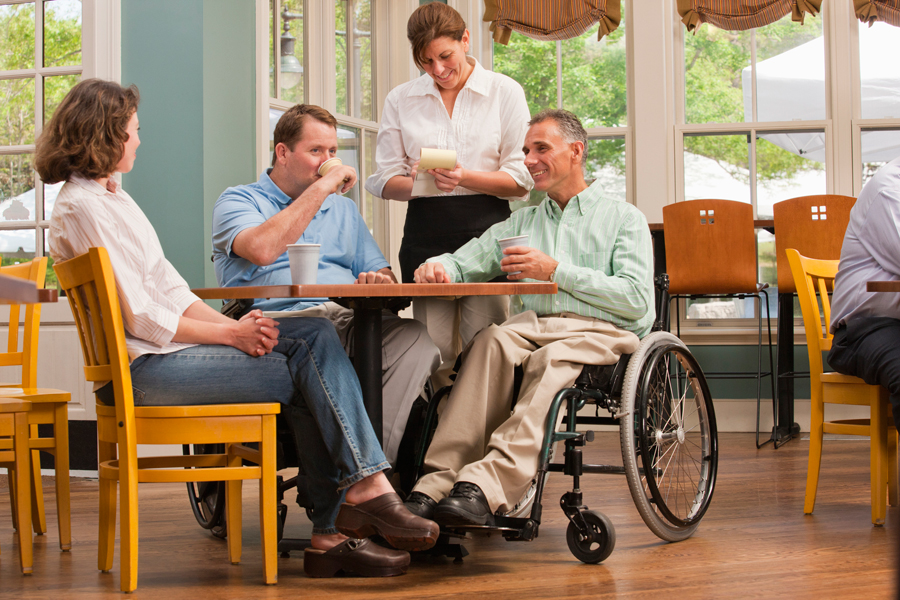Customer mobility
- Extra awareness is needed to meet the requirements of customers who may have additional needs, such as mobility difficulties. The following considerations should be given on these occasions.
- Offer wheelchair users places at tables where there is adequate space for manoeuvrability.
- Offer wheelchair users a place out of the main thoroughfare of customer/staff movement.
- Offer wheelchair users a place with easy access to cloakrooms, exits and fire exits.
- Always ensure that menus and wine lists are immediately available to any wheelchair user.
- Never move the wheelchair without asking the customer first.
- Crutches/walking sticks should be placed in a safe but accessible and readily available position.
- Customers with dexterity difficulties may be assisted by first asking the customer how best they can be helped. Assistance may include, for example, ensuring that all items served or placed on to the table are near to the customer, offering to fillet/bone fish and meat items and offering to cut up potato and vegetable items.2.5 Interpersonal skills

Blind and partially sighted customers
Awareness is also required to meet the needs of those customers who may be blind or visually impaired. The following considerations should be taken into account.
- Talk to and treat the customer as you would any other customer.
- Remember it is by touch that blind people ‘see’ and are made aware that they are involved in what is happening around them.
- If in doubt ask the person directly how they may best be helped.
- Do not talk to their companions as if the person was not there.
- Offer to read menus or wine and drink lists.
- Immediately prior to taking the customer’s order, a gentle touch on the hand or arm will attract their attention to you.
- Offer to fillet/bone fish and meat items.
- Offer to cut up potato and vegetable items should it be necessary.
- Never overfill cups, glasses or soup bowls.
- Should you feel it appropriate, use bowls instead of plates for specific food items, but always ask the customer first.
- Ask if you should describe where the food items are on the plate. Use the clock method to explain the location of food on a plate, for example, 6 o’clock for meat, 10 to 10 for vegetables and 10 past 2 for potatoes.
Customers with communication difficulties
- Be aware of communication difficulties that may arise when, for example, customers are deaf or hearing impaired or have little understanding of the English language. In such cases the steps shown below may be helpful.
- Speak directly to the customer.
- Stand in such a position that the customer is able to see your face clearly.
- Speak normally but more distinctly.
- Describe food/drink items in simple, precise and plain language.
- Seat customers away from possible excessive noise, as this is uncomfortable for customers wearing hearing aids.
- Always read back the food or drink order received to confirm all requests.
- Listen attentively to what is being said to you to ensure you understand the customer’s requirements.
Last modified: Tuesday, 2 February 2021, 11:51 AM
